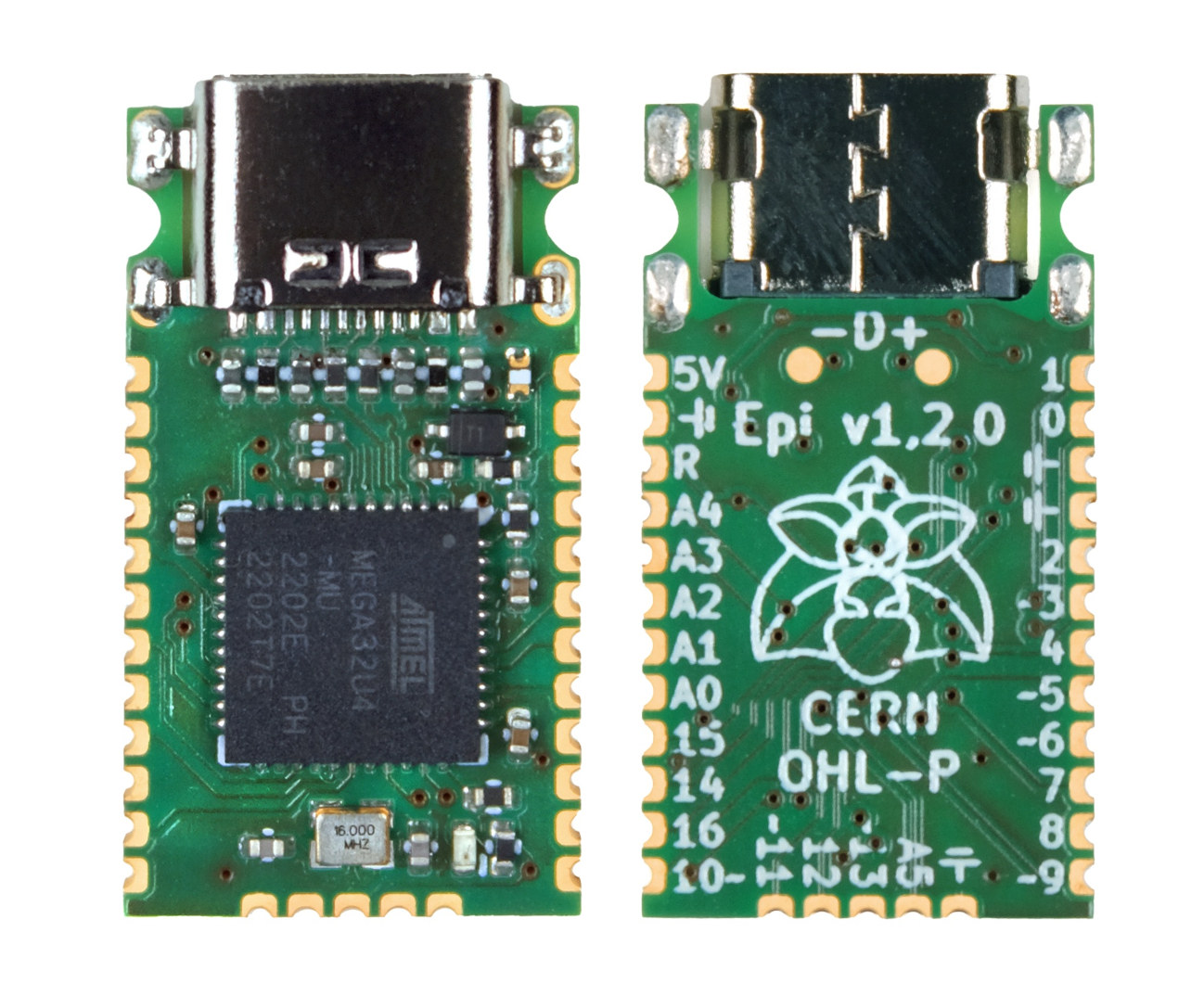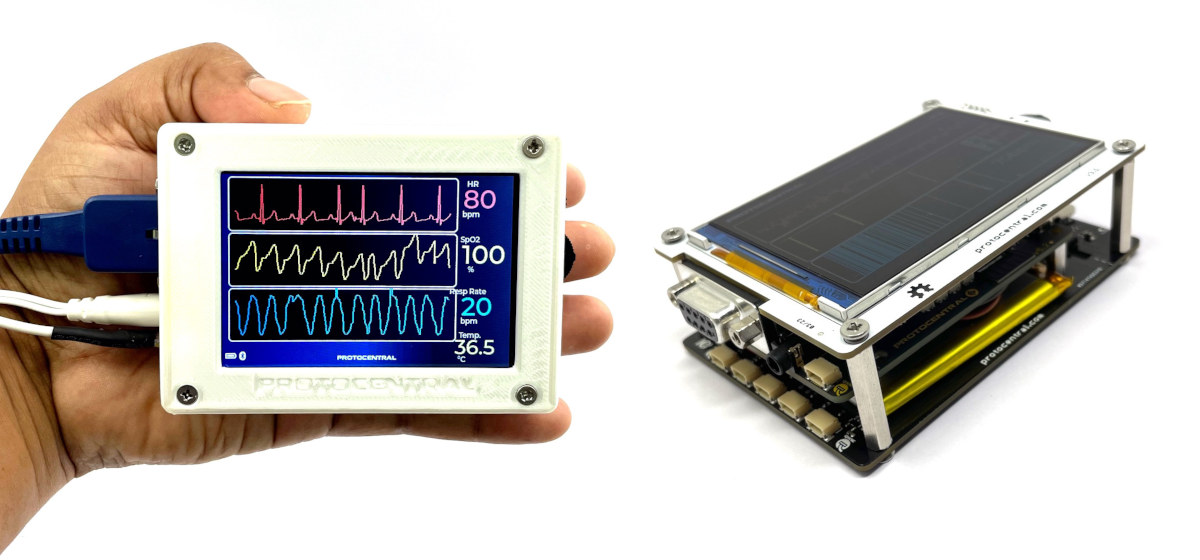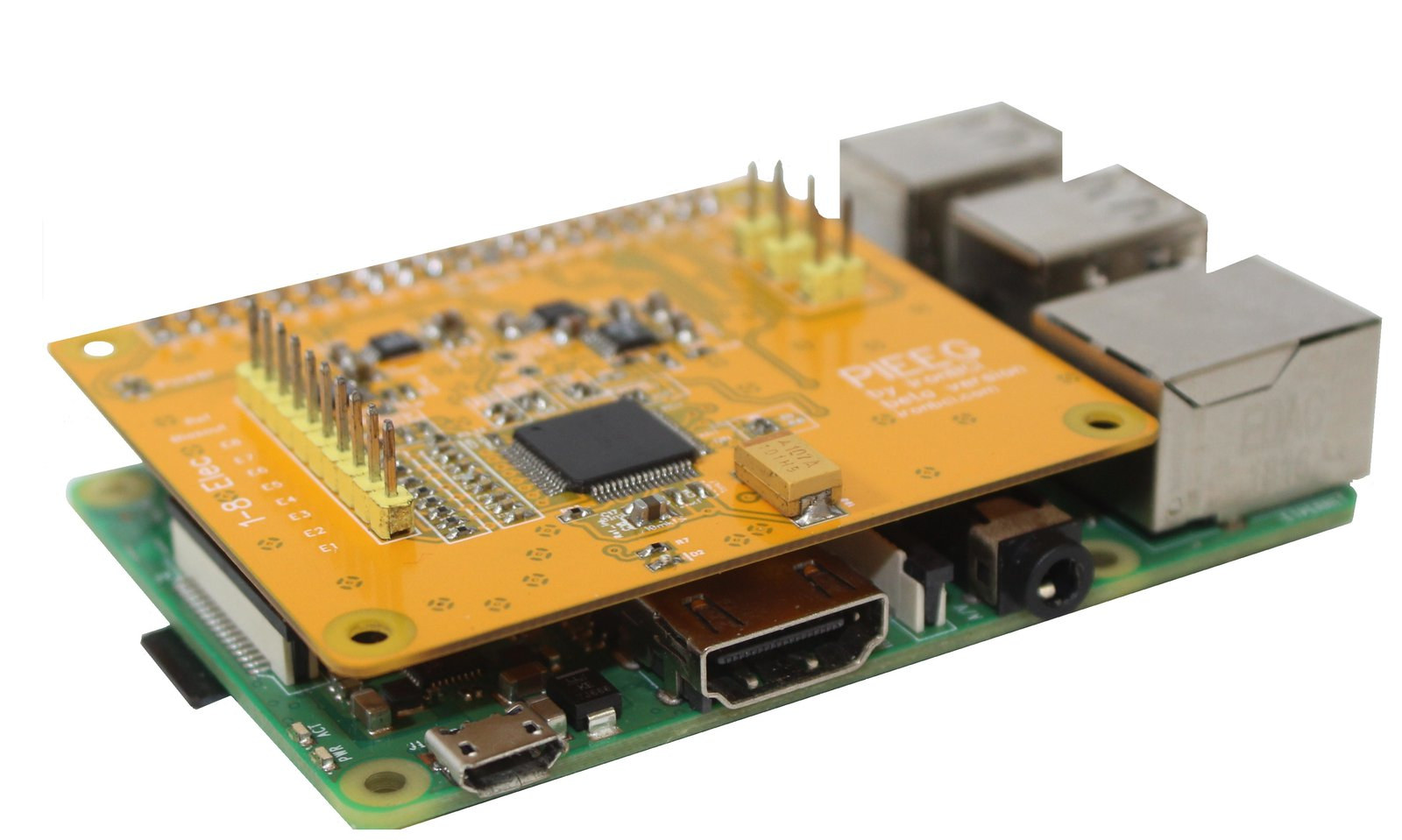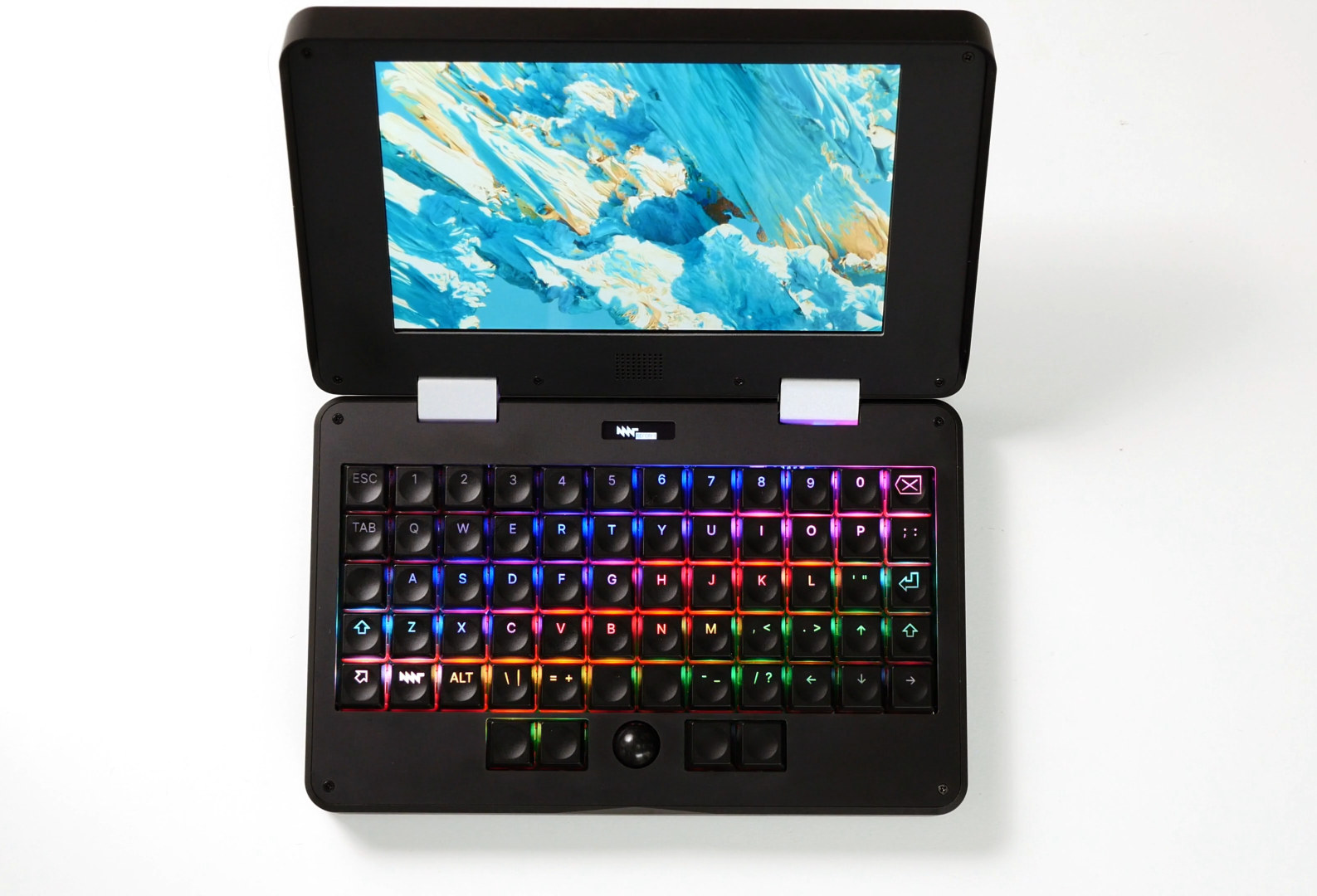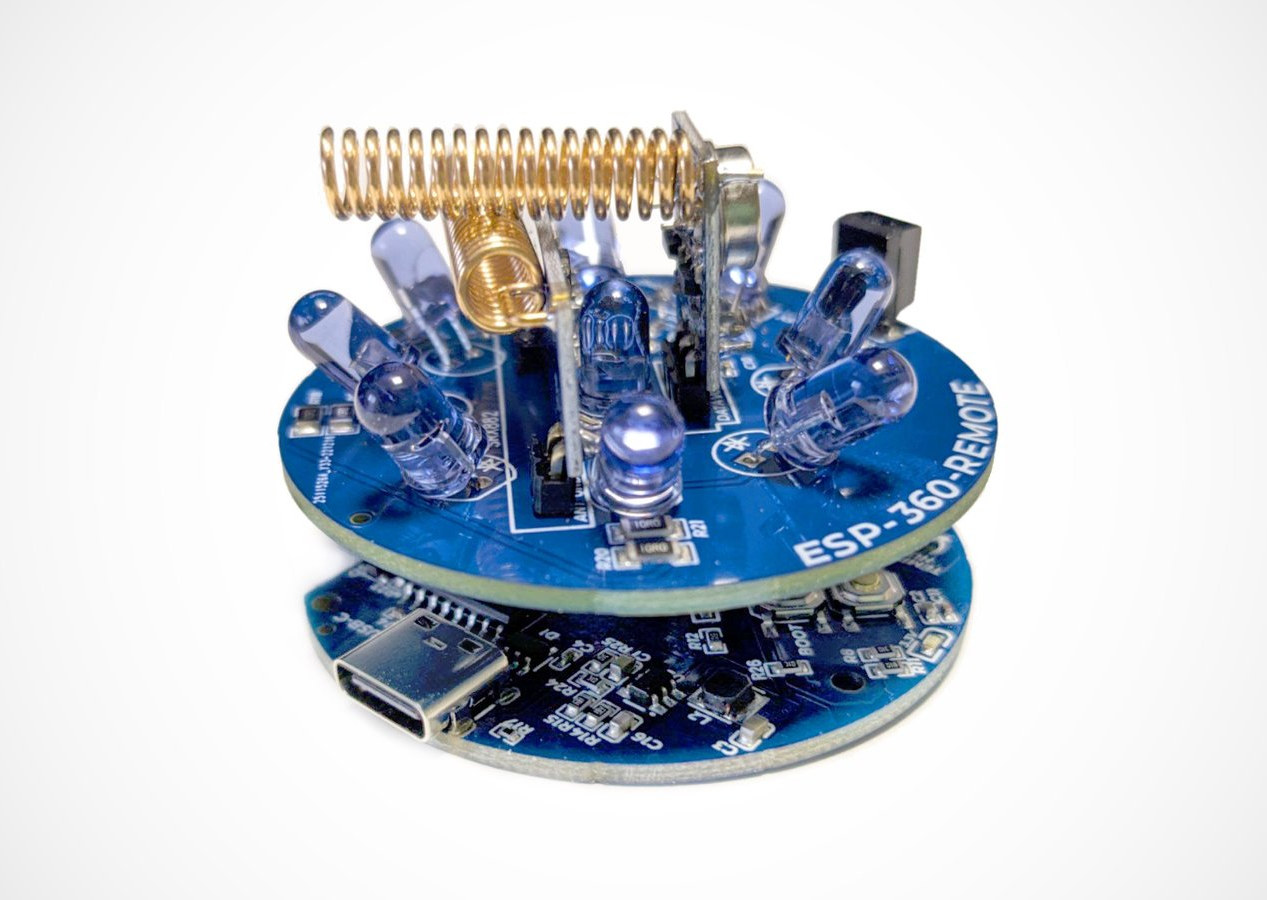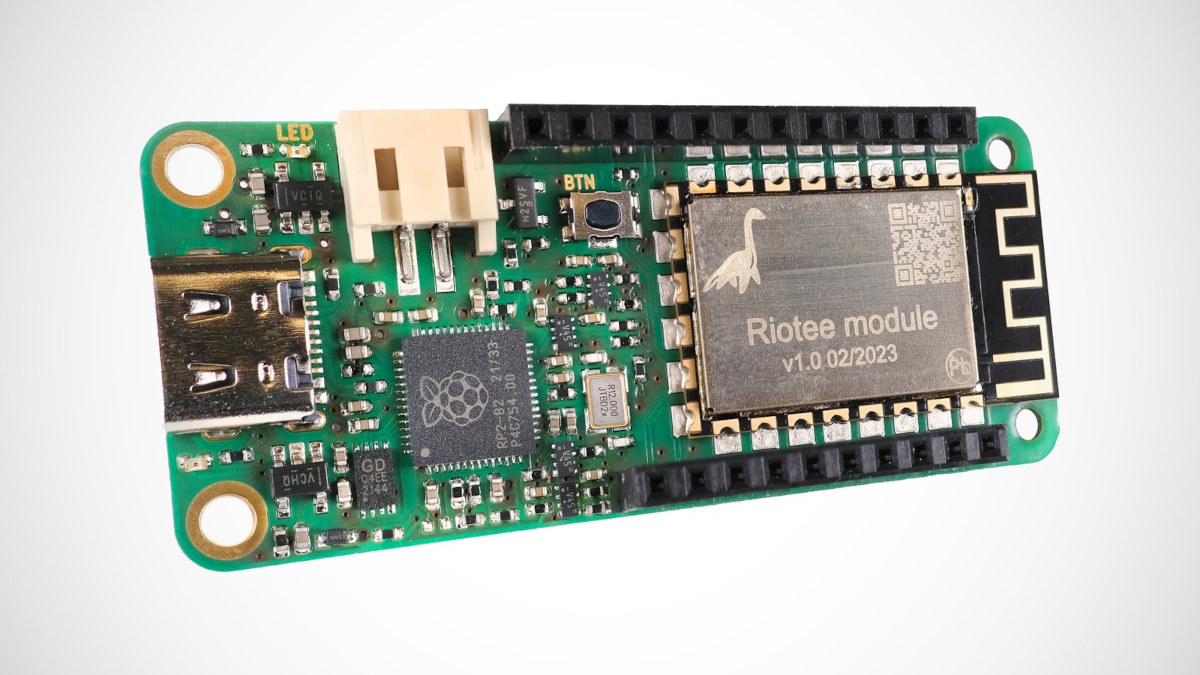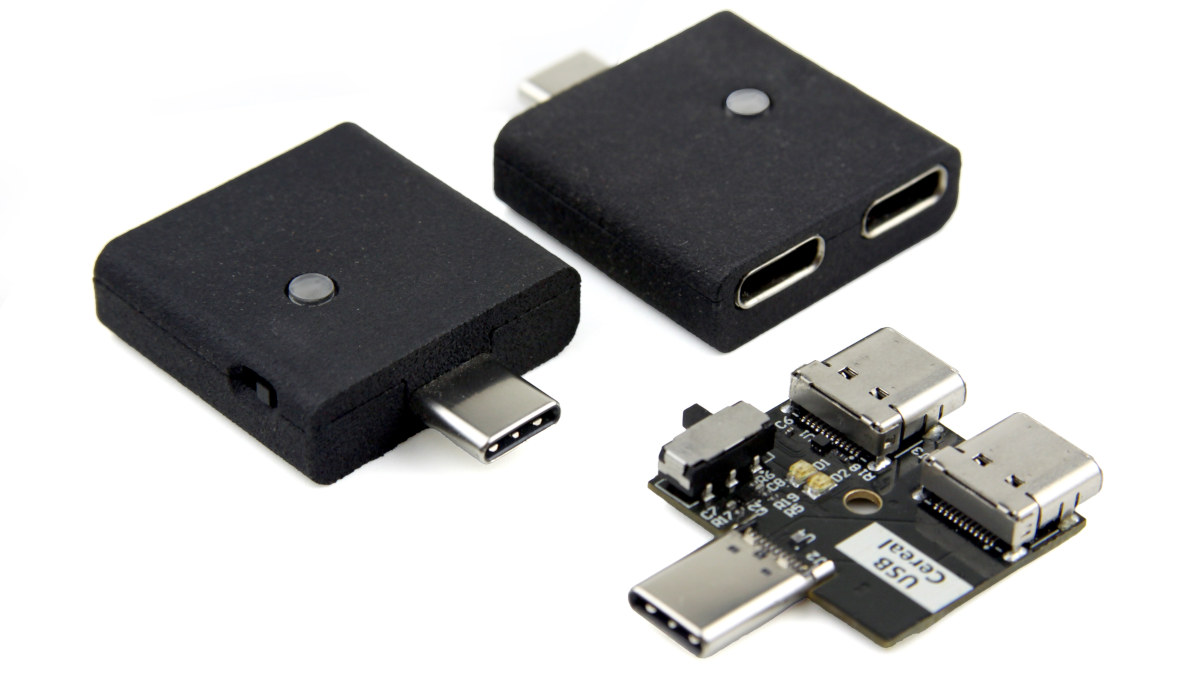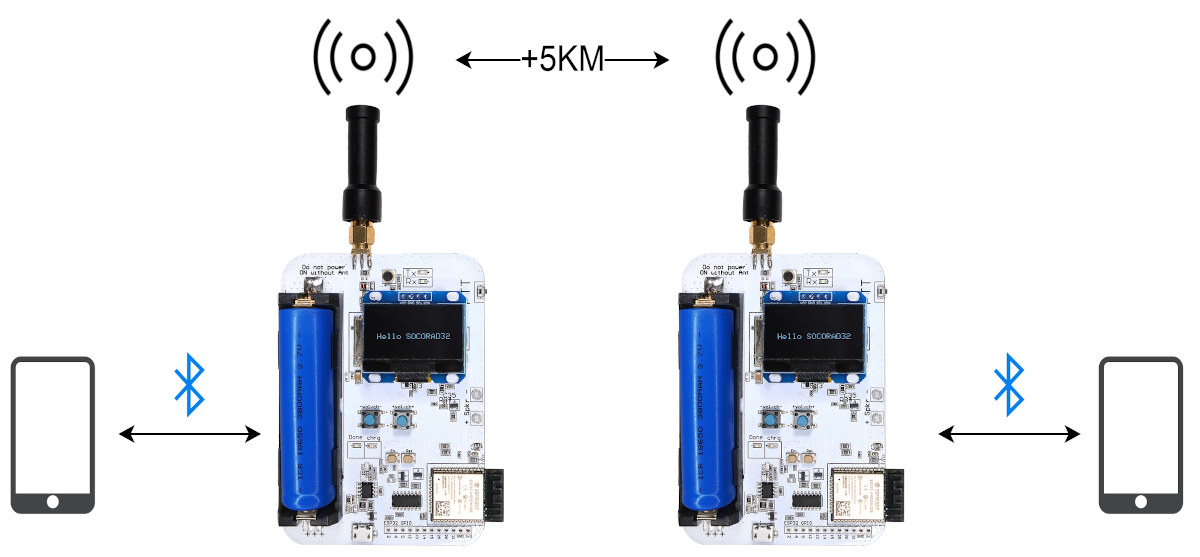Epi 32U4 is a tiny Arduino-compatible development board based on a Microchip ATmega32U4 8-bit AVR microcontroller with just a USB-Type-C port and 23 I/O pins accessible through castellated holes that can be soldered to headers or another PCB. The board also includes some protection such as a fuse, ESD protection, a ferrite bead, and a low-pass filter for the analog reference voltage. Ping Hobbyelektronik, the developer, says it’s especially useful for compact USB keyboards, but it also has more I/O ports than a standard Pro Micro board, so it’s appropriate for a range of other projects as well. Epi 32U4 board specifications: MCU – Microchip ATmega32U4 8-bit AVR microcontroller @ 8MHz or 16 MHz with 32 KB flash, 2.5 KB SRAM, 1 KB EEPROM USB 1x USB Type-C port for power and programming USB D+ and D- lines are broken out ESD and surge protection on USB data lines and […]
HealthyPi 5 WiFi & BLE biosignal-acquisition sensor platform captures body temperature, ECG, PPG, SpO₂, and other vitals (Crowdfunding)
HealthyPi 5 is an open-source sensor platform for biosignal acquisition based on Raspberry Pi RP2040 microcontroller and ESP32-C3 WiFi & BLE module used to capture vitals such as electrocardiogram (ECG), respiration, photoplethysmography (PPG), oxygen saturation (SpO₂), and body-temperature data. It is a complete redesign of the HealthyPi v4 Raspberry Pi HAT with many of the same features. While the HealthyPi 5 also follows the Raspberry Pi HAT form factor and can be connected to a Raspberry Pi SBC to analyze the data, it can also be used as a standalone device with the processing handled by the RP2040 dual-core Cortex-M0+ microcontroller and connectivity through an ESP32-C3 wireless module, and data visualized on a 3.5-inch SPI display or a smartphone over WiFi or Bluetooth. HealthyPi 5 specifications: MCU – Raspberry Pi RP2040 dual-core Arm Cortex-M0+ microcontroller @ 133 MHz with 264 KB SRAM Wireless Module – ESP32-C3 RISC-V module with 2.4 […]
PiEEG shield for Raspberry Pi enables brain computer interfaces (Crowdfunding)
PiEEG is an open-source hardware Raspberry Pi shield that measures electroencephalography (EEG), electromyography (EMG), and electrocardiography (ECG) bio-signals and provides a brain-computer interface to applications or robots for gaming, entertainment, sports, health, etc… Ildar Rakhmatulin, a Research Associate at Heriot-Watt University in Edinburgh, is passionate about open-source brain-computer interfaces and first created the IronBCI project based on ADS1299 and STM32 and published a research paper entitled “Low-cost brain computer interface for everyday use” about his work. But cost increases related to the semiconductors shortage of recent years meant the price for his “low-cost” project shot up to over $1,000. So he went back to the drawing board and created the PiEEG shield for Raspberry Pi now available on Crowd Supply. PiEEG shield specifications: ADC – Texas Instruments ADS1299 Analog-to-Digital Converter for biopotential measurements Supported SBCs – Raspberry Pi 3 or 4, and boards with the same 40-pin GPIO header. Host […]
MNT Pocket Reform open-source 7-inch modular laptop launched on Crowd Supply
The MNT Pocket Reform, a smaller version of the MNT Reform laptop, with a 7-inch display has just launched on Crowd Supply with an NXP i.MX8M Plus system-on-module, but also compatible with an NXP Layerscape LS1028A module, Raspberry Pi CM4, Pine64 SOQuartz, and an AMD Kintex-7 FGPA module. The open-source modular laptop also comes with a 128GB eMMC flash, 8GB RAM, WiFi 5 and Bluetooth 5.0 connectivity on-module, an optional 1TB NVMe SSD, a backlit 60-key mechanical keyboard with an optical trackball and four buttons, a micro HDMI port to connect an external display, a few USB ports, and Ethernet through an ix industrial connector. MNT Pocket Reform specifications: SoM – Boundary Devices Nitrogem8M Plus system-on-module with SoC – NXP i.MX 8M Plus quad-core Arm Cortex-A53 @ 1.8GHz with Cortex-M7 real-time core, Vivante GC7000UL GPU, 2.3 TOPS NPU with open drivers, H.264/H.265 Video Decoder with open drivers (Hantro), and HiFi4 […]
Home Assistant compatible “ESP 360 Remote” controls infrared and 433MHz appliances over WiFi (Crowdfunding)
ESP 360 Remote is an ESP32-based IR and 433 MHz RF remote with built-in sensors used to control home appliances over WiFi and that also integrates with Home Assistant open-source home automation framework. The open-source hardware design is comprised of a mainboard with an ESP32-WROOM-32E module, temperature, humidity, and light sensors, and a board on the top with nine infrared LEDs, one IR receiver, as well as a 433 MHz (or 315 MHz) RF receiver and transmitter with the receivers used for learning the code from the remote controls. ESP 360 Remote specifications: Wireless module – ESP32-WROOM-32E with ESP32 dual-core microcontroller 4MB flash 2.4 GHz WiFi and Bluetooth LE connectivity, built-in PCB antenna, fully compatible with ESPHome firmware Control interface 9x High Power IR LEDs to control devices in all directions (hence the 360 name) IR receiver to learn remote control codes 433 MHz (or 315 MHz) RF transmitter 433 […]
Riotee batteryless stackable IoT board embeds an nRF52833 module (Crowdfunding)
Nessie Circuits’ Riotee board features a Riotee module based on Nordic nRF52833 WiSoC with a 2.4 GHz radio that targets batteryless IoT applications thanks to a stackable design taking a capacitors add-on board and a solar panel. Batteries introduce maintenance costs and environmental issues with millions of batteries disposed of every day. That’s why companies are trying to provide solutions for batteryless IoT designs such as the Everactive batteryless IoT devkit or Telink energy harvesting wireless module for remote controls. The Riotee module, board, and ecosystem also aim to play their part in reducing the use of batteries in wireless IoT devices. Riotee board specifications: Riotee module Wireless MCU – Nordic nRF52833 Arm Cortex-M4F microcontroller @ 64 MHz with 512 kB flash, 128 kB RAM, 2.4 GHz radio Memory – 128 kB of non-volatile memory (MSP430FR5962 FRAM) for “automatic checkpointing of application state” Castellated holes with 11x GPIOs including two […]
USB Cereal is an open-source hardware USB-C debugging & development tool (Crowdfunding)
0xDA LLC’s USB Cereal is an open-source hardware development tool with three USB-C ports designed to simplify the testing, development, debugging, and manufacturing of devices with USB Type-C ports. Initially originated at Google, the USB Cereal project has gone through multiple revisions to optimize its quality and lower the BoM cost, and the device can be used for all sorts of USB Type-C debugging using a UART serial communication with the host device through the USB-C sideband use (SBU) pins typically reserved for device-specific applications. USB Cereal specifications: USB Type-C ports 2x USB-C ports for passthrough between the host and device under test (DUT) Note: the DUT port is on the side with a single USB Type-C connector No orientation detection has been implemented to keep the design as simple and inexpensive as possible 1x USB-C port for capture support to 3 Mbps connected through FTDI FT232RNQ USB to TTL […]
SOCORAD32 ESP32 walkie-talkie board also supports data communication (Crowdfunding)
SOCORAD32, aka ESP32 Software Controlled Radio, is a hackable, open-source hardware ESP32-based amateur radio board for walkie-talkie and data communication applications. The board comes with an ESP32 module with WiFi 4 and Bluetooth connectivity, an RDA Microelectronics RDA1846 RF IC used in many commercial walkie-talkies and offering a range up of to 5 km, a small display, a speaker, and a 18650 battery holder. SOCORAD32 specifications: Microcontroller module – ESP32-WROOVER-32E with ESP32 dual-core microcontroller, 4MB flash, 2.4 GHz WiFi and Bluetooth connectivity, built-in PCB antenna Walkie-talkie chip – RDA1846 single-chip transceiver for Walkie-Talkie applications (See datasheet and programming guide for details) Frequency Range: ISM 400 – 470 MHz Frequency Step: 5 K / 6.25 K / 12.5 K / 25 K RF Output Power: 2 W / 0.5 W (+5 KM @ 2 W) set to what the local law permits RF Input Sensitivity: -122 dBm Voice Scrambling: 8 type […]


